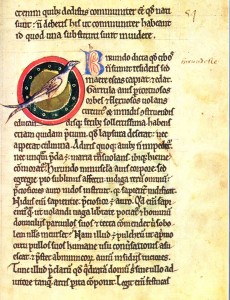
Swallow /hirundo/ medallion 3.2 cm in diameter
The tale of a swallow comes to us from Isidor /XII. VII.70/ and not from original “Physiologus”. Isidor explains the meaning of “hirundo” by the fact that the bird takes food while on the wing, that is in the air /haerendo, aerendo/. The swallow flies in circles and leaves the nest as soon as she feels that the house under the roof of which she had built the nest is going to tumble down. She lives overseas during the winter and is very clever at building nests. The swallow accustoms her children to the company of men, building nests in their dwellings. The swallow knows a remedy by which to restore her children’s vision. The medieval stories of the swallow originate from antique descriptions /Aristotle, V.544 a 26; IX, 612 b 21; Pliny, X.24.34; VIII.27.41/. „Aviarium” /41/ gives a symbolic interpretation of the swallow based on the biblical text about a swallow who is aware of time /Jeremiah 8:7, Isaia 38:14/. It is also connected with the “Moralia in Job” by Gregory the Great where he compares the twittering of the bird with the preaching of a tutor, and the young birds with the pupils /PL, v.LXXVI/. The twittering of the swallow is also compared with the sorrow of repentance. Pierre of Beauvais /11.145/, Albert the Great /XXIII.I.60/ and Bru-netto Latini /I.V.167/ repeat the story of the bestiary.
Swallow
by
Leave a Reply